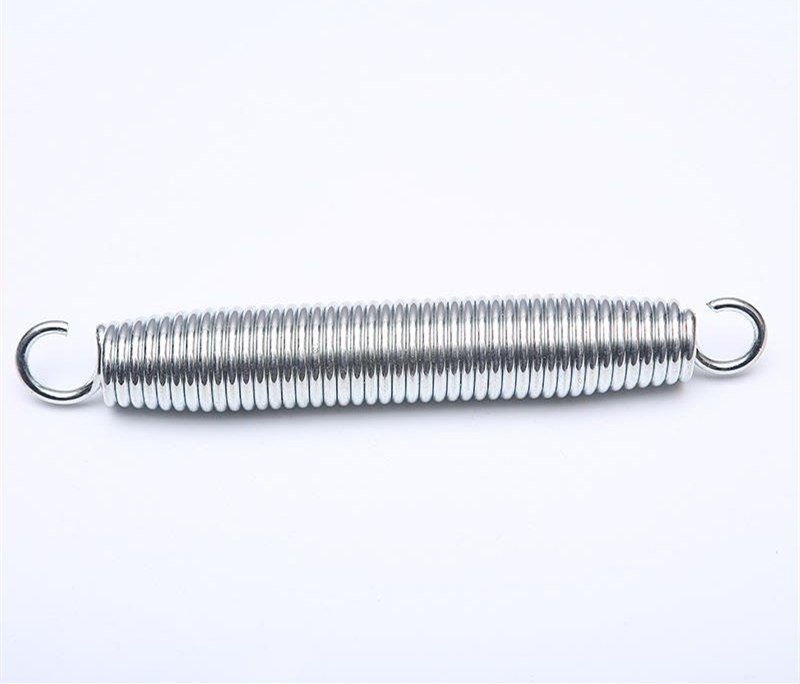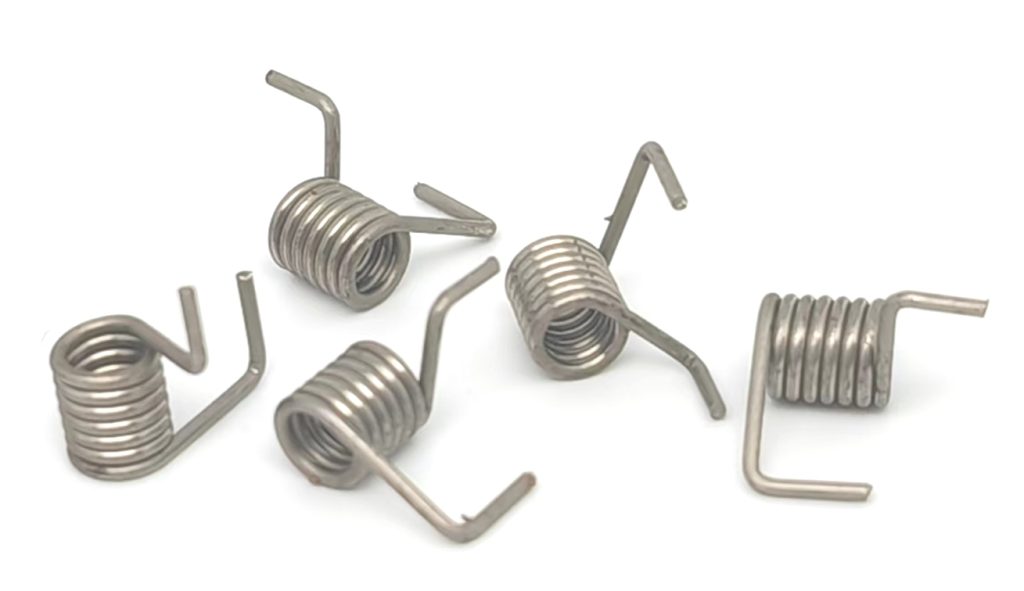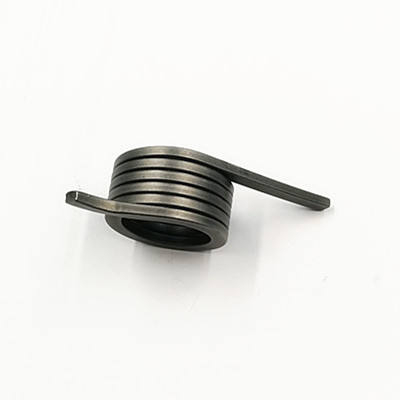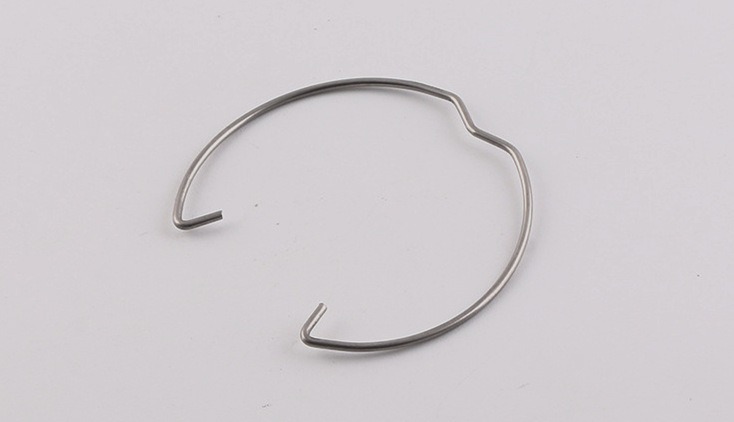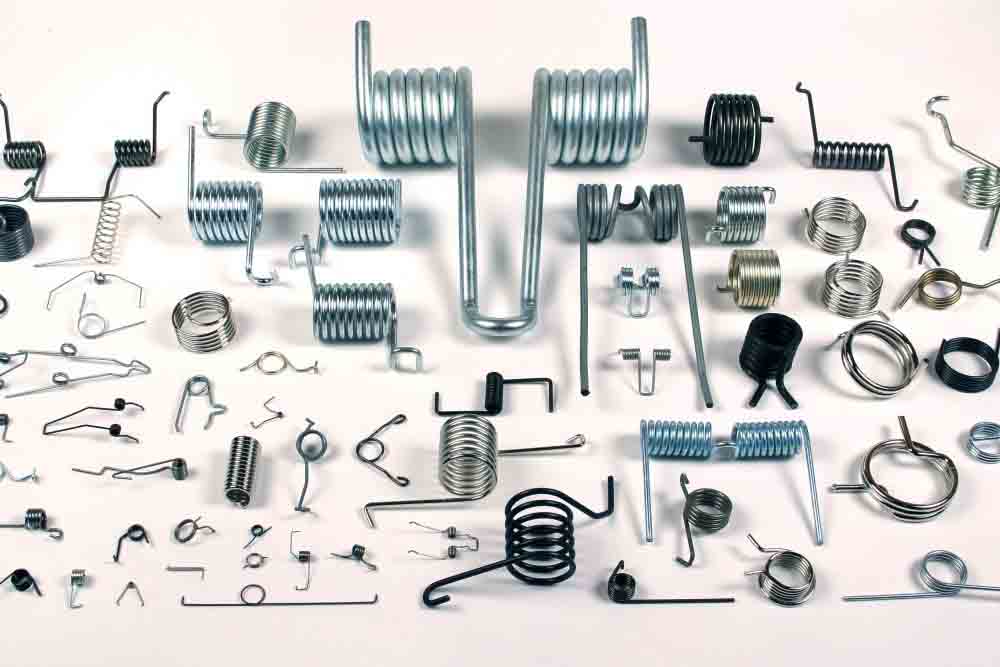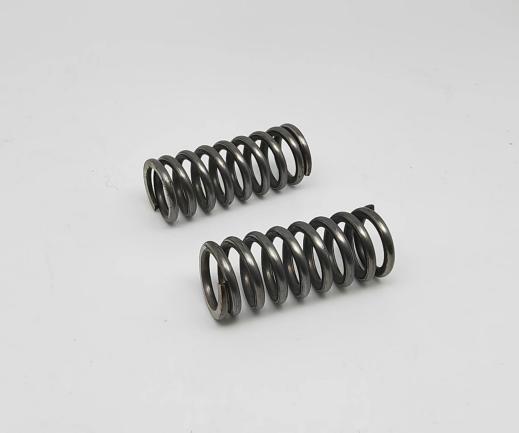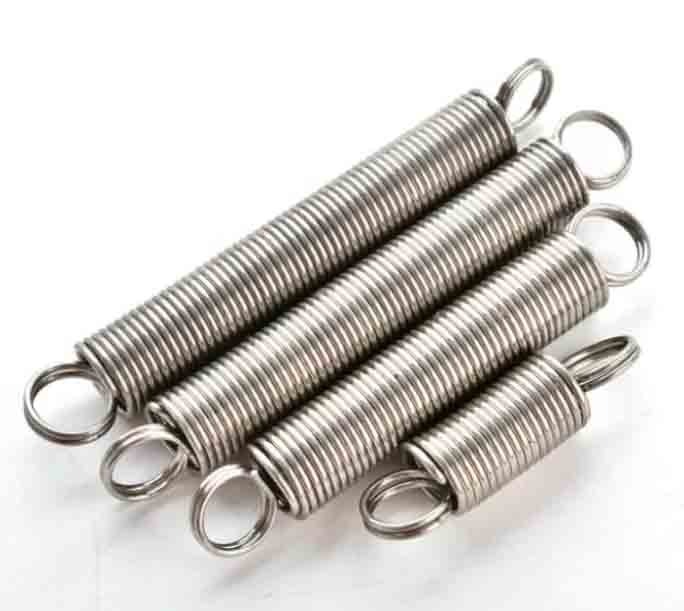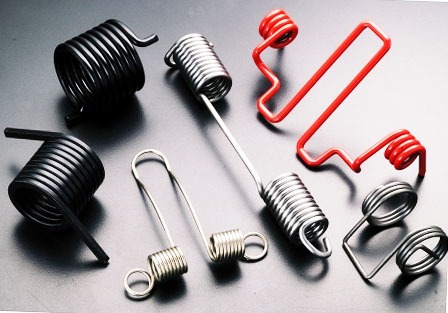What are the Differences Among Wire Torsion Springs, Wire Extension Springs and Wire Compression Springs
Wire springs are essential mechanical components widely used in various industries and applications. They store and release mechanical energy, providing flexibility, support, and motion control. Understanding the different types of springs is crucial for selecting the appropriate one for specific applications. This article aims to explore and differentiate wire torsion springs, wire extension springs, and wire compression springs, highlighting their design, working mechanisms, applications, advantages, limitations, and factors influencing their selection.
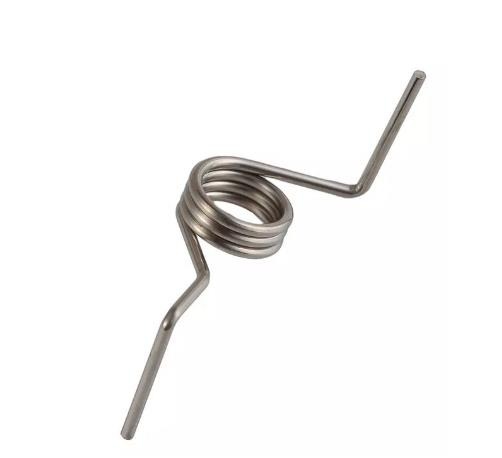
Differences in Design and construction Among Wire Torsion Springs, Wire Extension Springs and Wire Compression Springs
Design and construction of Wire Torsion Springs
Coiled wire configuration
Wire torsion springs consist of a tightly wound coil of wire, typically fabricated from high-carbon steel, stainless steel, or various alloys. The choice of material hinges upon several factors including the desired strength, temperature resistance, and corrosion resistance of the spring.
Materials used
The selection of materials for wire torsion springs is critical and contingent upon factors such as the required strength, ability to withstand high temperatures, and resistance to corrosion. The materials chosen should be carefully evaluated to ensure optimal performance and longevity.
Spring index and pitch
Two significant factors that influence the performance of wire torsion springs are the spring index and the pitch. The spring index represents the ratio of the mean coil diameter to the wire diameter, while the pitch signifies the distance between adjacent coils. These parameters play a pivotal role in determining the behavior and characteristics of the spring.
Design and construction of Wire Extension Springs
Helical coil shape
Wire extension springs possess a helical coil shape with loops at the ends. This configuration allows the spring to extend and contract in response to applied forces.
Materials and wire size
Wire extension springs are commonly manufactured using materials such as music wire, stainless steel, and various alloys. The selection of material depends on factors like required strength, corrosion resistance, and load-bearing capacity. The wire diameter is carefully chosen based on the specific load requirements of the application.
Initial tension and hook types
The initial tension, which refers to the force required to separate the coils, and the type of hooks employed in the spring design significantly influence the spring’s characteristics. These factors impact the extension and contraction behavior, as well as the overall performance of the spring.
Design and construction of Wire Compression Springs
Helical coil shape
Similar to extension springs, wire compression springs exhibit a helical coil shape. This configuration allows the spring to compress and expand along its axis, providing resistance against applied compressive forces.
Wire diameter and pitch
The wire diameter and pitch are critical factors that influence the strength and compression characteristics of the spring. The selection of an appropriate wire diameter and pitch ensures that the spring can effectively handle the desired load and compression requirements.
Solid or open ends
Wire compression springs can feature solid ends or open ends, depending on the specific application requirements. Solid ends provide stability and support, while open ends allow for additional flexibility and accommodation of different mounting configurations.
Differences in Working Mechanism and Applications Among Wire Torsion Springs, Wire Extension Springs and Wire Compression Springs
Working mechanism and applications of Wire Torsion Springs
Torsion force generation
Wire torsion springs generate a reactive force when subjected to twisting, thereby providing torque and angular displacement. This mechanism allows them to store rotational energy and release it when the torque is relieved.
Common uses in various industries
Wire torsion springs find wide-ranging applications in numerous industries. They are commonly utilized in automotive systems, door handles, balance mechanisms, and electrical switches, to name a few. These springs play a crucial role in ensuring proper functioning and reliable performance in various mechanical systems.
Working mechanism and applications of Wire Extension Springs
Extension and contraction forces
Wire extension springs exert resistance and force when extended or contracted. When the spring is pulled, it stores energy within its coils, and this energy is released when the applied force is released. This mechanism allows for controlled extension and controlled release of energy.
Common applications in different fields
Wire extension springs find widespread use across various industries. They are commonly employed in trampolines, garage doors, agricultural equipment, and industrial machinery. These springs play a vital role in ensuring proper functioning, controlled movement, and reliable force generation in a multitude of applications.
Working mechanism and applications of Wire Compression Springs
Compression and expansion forces
Wire compression springs generate resisting forces when compressed. They store potential energy within their coils, which is released when the compressive force is removed, causing the spring to expand. This mechanism enables controlled compression and expansion, making compression springs invaluable in various applications.
Typical applications and industries
Wire compression springs find extensive applications in diverse industries. They are commonly utilized in automotive suspensions, industrial equipment, valves, appliances, and many other systems that require precise control of compression forces. The versatility and reliability of compression springs make them indispensable in numerous mechanical applications.
Differences in Advantages and Limitations Among Wire Torsion Springs, Wire Extension Springs and Wire Compression Springs
Advantages and limitations of Wire Torsion Springs
Advantages of torsion springs
Wire torsion springs offer several advantages that contribute to their popularity in many applications. These include reliable angular deflection, rotational balance, and resistance to external forces. Their ability to store and release rotational energy efficiently makes them indispensable in various mechanisms where torque and angular displacement are crucial.
Limitations or considerations when using torsion springs
While wire torsion springs possess numerous advantages, their successful implementation requires meticulous design calculations. Precise attention must be given to factors such as torque, stress, and rotational characteristics to ensure the springs perform optimally and meet the desired specifications. Adequate engineering analysis and design considerations are necessary to ensure the torsion springs function reliably and safely.

Advantages and limitations of Wire Extension Springs
Advantages of extension springs
Wire extension springs offer several advantages that contribute to their popularity in numerous applications. They provide a wide range of load-bearing capabilities, allowing them to accommodate different force requirements. Additionally, their controlled extension and elasticity make them valuable in applications where controlled movement or force generation is necessary.
Limitations or considerations when using extension springs
While wire extension springs possess numerous advantages, certain limitations and considerations should be taken into account. Overstretching the spring beyond its elastic limit can lead to permanent deformation and a decrease in performance. Additionally, stress relaxation, where the spring loses force over time, and buckling, which affects stability, are potential concerns that need to be addressed during design and usage.

Advantages and limitations of Wire Compression Springs
Advantages of compression springs
Wire compression springs offer several advantages that contribute to their wide-ranging utilization. They provide high load-bearing capacity, enabling them to withstand significant compressive forces. Moreover, compression springs offer precise control over compression, allowing for accurate and controlled movement in applications. They are available in a wide range of sizes and materials, providing flexibility and customization options.
Limitations or considerations when using compression springs
While wire compression springs possess numerous advantages, there are certain limitations and considerations to keep in mind. Buckling, which occurs when a spring experiences instability under compressive forces, needs to be considered during the design process. Solid height limitations, referring to the minimum compressed height the spring can achieve, should also be taken into account. Additionally, stress relaxation, where the spring loses force over time, is a potential concern that should be addressed through appropriate material selection and design considerations.
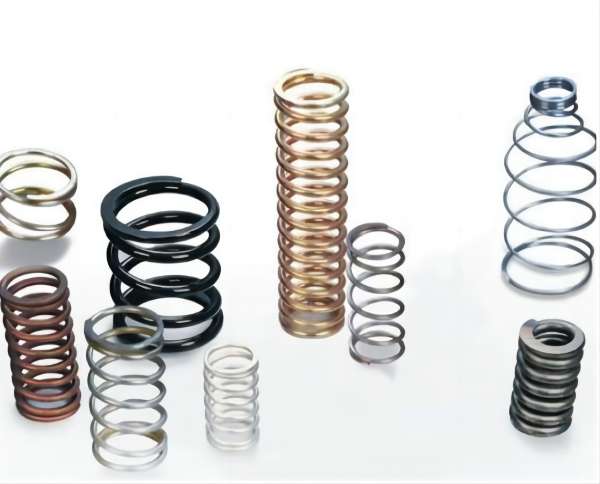
Differences in Characteristics Among Wire Torsion Springs, Wire Extension Springs and Wire Compression Springs
Torsion springs vs. extension springs
Torsion springs and extension springs possess distinct characteristics that set them apart. Torsion springs provide rotational resistance, resisting twisting or torque forces. On the other hand, extension springs offer linear resistance, extending and contracting along their length in response to applied forces.
Torsion springs vs. compression springs
Torsion springs and compression springs differ in their primary mode of resistance. Torsion springs resist torque forces, exerting a reactive force when twisted. In contrast, compression springs resist axial forces, compressing and expanding along their length in response to applied loads.
Extension springs vs. compression springs
Extension springs and compression springs exhibit contrasting behaviors. Extension springs extend and contract, elongating or shortening in response to applied forces. Compression springs, on the other hand, compress and expand along their length, reducing or increasing their height when subjected to axial forces.
Differences in Factors to Consider for Selection Among Wire Torsion Springs, Wire Extension Springs and Wire Compression Springs
Load requirements and forces
The magnitude and direction of forces acting on the spring play a vital role in selecting the appropriate type. Torsion springs are preferred when rotational resistance is required, while extension springs are suitable for linear resistance. Compression springs are chosen for applications where axial forces need to be resisted.
Space constraints and dimensions
The available space and specific size limitations within the application often dictate the choice of a particular spring type. The dimensions of the system and the spring’s physical characteristics must be carefully considered to ensure proper fit and functionality.
Environmental considerations
Environmental factors such as temperature, humidity, and corrosive conditions influence the selection of materials and coatings for the springs. Different materials and surface treatments may be required to enhance the springs’ durability and performance in challenging environments.

Conclusion:
In summary, wire torsion springs, wire extension springs, and wire compression springs each have unique characteristics and are designed to serve specific purposes. Understanding their definitions, design principles, working mechanisms, applications, advantages, and limitations is crucial for selecting the appropriate spring type for different scenarios. The comparison and contrast between these spring types, along with the consideration of load requirements, space constraints, and environmental factors, will enable engineers and designers to make informed decisions. It is essential to recognize the importance of precise spring selection to ensure optimal performance and reliability in various industries. Further research or consultation with experts is encouraged to obtain detailed guidance in selecting the most suitable spring for specific applications.

